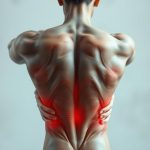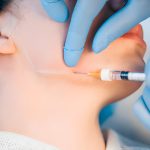Injuries can transform a person’s life within seconds. A torn muscle, for example, doesn’t just cause pain it can limit movement, affect confidence, and interrupt daily routines. Healing such injuries requires more than just time and rest. It involves a combination of medical precision, thoughtful care, and modern techniques that allow the body to rebuild itself. Behind every successful recovery lies the quiet support of well-designed tools and skilled professionals who use them. The careful use of surgical instruments in muscle repair surgeries, for instance, shows how precision can turn trauma into a story of strength.
The Nature of Muscle Damage
Muscles are flexible, but they have limits. A sudden twist, overstretch, or impact can cause tiny tears or even a complete rupture. When this happens, pain and swelling are the body’s first signals that something is wrong. Mild strains often heal with rest, but severe muscle damage sometimes requires surgical intervention.
In deeper injuries, surgery helps reconnect torn fibers or reattach muscles to bones. This process must be carried out with extreme care because surrounding tissues like nerves and blood vessels are very delicate. Any mistake can slow healing or cause long-term discomfort.
The Cornerstone of Recovery
Precision is what separates smooth recoveries from prolonged struggles. Every move during a muscle repair must be exact from locating the damaged tissue to making the smallest incision. The goal is to restore function without causing unnecessary trauma. Surgeons rely on advanced imaging, magnification, and fine-tipped instruments to perform these delicate procedures.
Over the years, medicine has moved toward less invasive methods. Instead of large cuts, doctors now use smaller entry points to reduce pain and scarring. This careful approach protects healthy tissue, which allows the body to focus its energy on repairing what’s truly damaged.
What Happens After Repair
Once the torn muscle is reconnected, the body begins its natural process of healing. Cells start forming new fibers, and scar tissue begins to strengthen the repaired area. This early stage requires patience. The muscle remains weak, and any sudden movement can reopen the wound. That’s why post-surgery care focuses on rest, gentle movement, and proper support.
Doctors often recommend light exercises to keep nearby joints flexible and to prevent stiffness. Over time, the repaired muscle begins to adapt and grow stronger with guided physical therapy.
The Role of Rehabilitation
Rehabilitation bridges the gap between surgery and full recovery. It’s a gradual process that retrains the muscle to handle movement again. At first, therapists focus on controlled stretching and improving circulation. Later, they introduce strength-building routines that help restore endurance.
Rehab is not just physical it’s mental too. Many patients feel anxious about moving the repaired muscle, fearing they might damage it again. Consistent guidance and motivation from medical teams help build confidence. Slow progress is still progress, and that mindset is key to long-term recovery.
Post-Surgical Care and Lifestyle Adjustments
After surgery, follow-up care ensures that the repair heals correctly. Doctors monitor swelling, wound healing, and pain levels closely. Good nutrition becomes just as important as therapy. Protein supports tissue growth, while vitamins and minerals strengthen the immune system and help reduce inflammation.
Lifestyle adjustments are also necessary. Patients may need to avoid heavy lifting, sudden movements, or strenuous workouts until the muscle fully recovers. Gradual reintroduction to daily activities allows the body to rebuild strength safely.
Technology’s Role in Muscle Repair
The evolution of medical technology has made recovery faster and safer. Surgeons now use robotic assistance and high-definition cameras for better precision during muscle repairs. These tools provide better visualization and steadier control, allowing surgeons to perform even complex procedures with minimal disruption to the body.
3D imaging and computer-guided systems also help in pre-surgical planning. They give doctors a clear view of the injury before making any incision, which reduces risks and improves surgical outcomes. In addition, advancements in bioengineering and stem cell therapy hold promise for helping muscles regenerate naturally in the future.
Emotional Recovery: The Invisible Healing
Physical healing is often visible stitches close, scars fade, movement returns. But emotional recovery takes time, too. Muscle injuries can leave people feeling helpless, especially if they were once active or athletic. Regaining strength requires mental resilience. Each small victory a painless step, a successful stretch rebuilds confidence.
Support from family, friends, and healthcare professionals can make this journey easier. Encouragement reminds patients that healing isn’t just about restoring muscles it’s about rediscovering independence and strength.
From Injury to Empowerment
Recovering from a muscle injury is a journey of patience, precision, and perseverance. Every phase from diagnosis to rehabilitation works toward one goal: helping the body heal fully and function naturally again. The process might be slow, but it’s filled with milestones that prove how capable the human body is of repairing itself.
Modern medicine has given people the opportunity to turn painful setbacks into stories of resilience. With the right care, precise treatment, and determined spirit, trauma no longer marks an end it becomes the beginning of triumph.











